The most classic high-quality Arabica variety of tin coffee flavor introduction
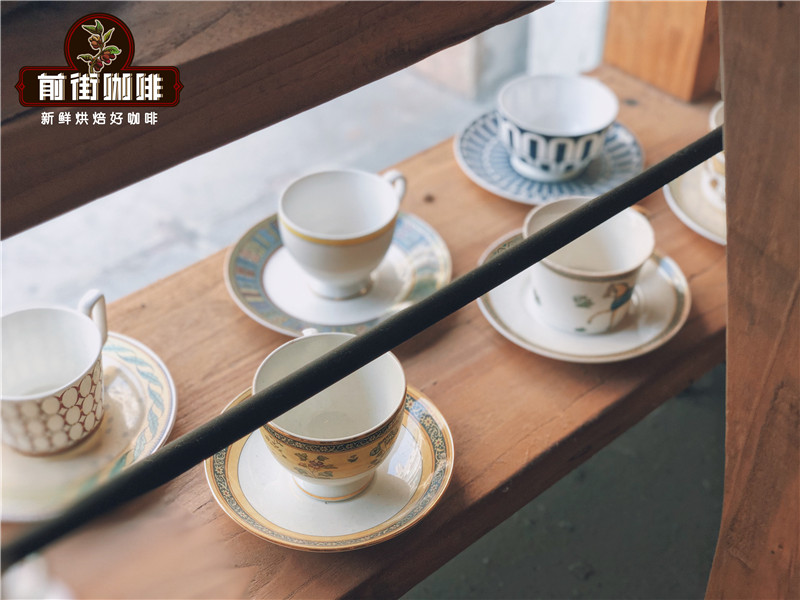
Professional coffee knowledge exchange More coffee bean information Please pay attention to coffee workshop (Weixin Official Accounts cafe_style)
Almost everyone who has come into contact with coffee has heard that it is the best variety of Arabica coffee beans, so many friends think that Arabica and iron pickup are the same grade. In fact, iron pickup is only one of the branches of Arabica varieties. Iron pickup and bourbon are the oldest native varieties in Arabica series. Among the common coffee bean varieties behind us, they basically revolve around the natural evolution of iron pickup and bourbon and the varieties cultivated by mixing.
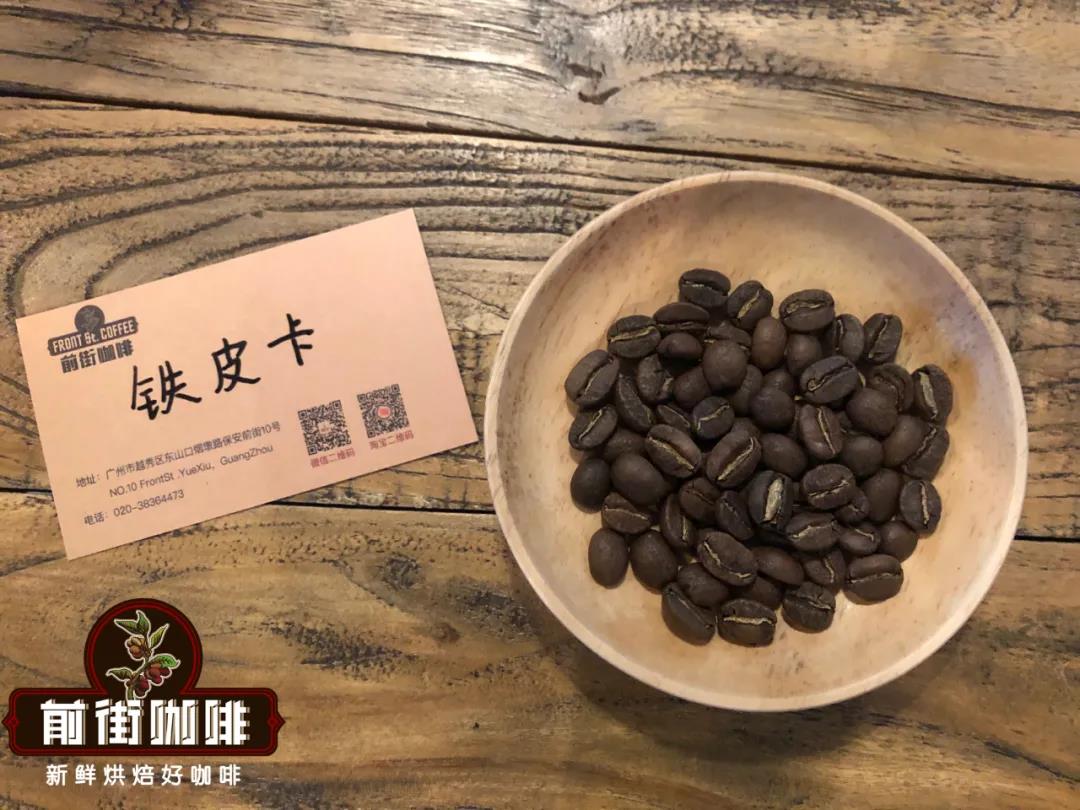
Among the coffee beans on the front street, there are five kinds of iron pickup coffee beans, namely Ethiopia 2020 Excellence Cup No.22 coffee beans, Jamaica Blue Mountain No.1 coffee beans, Hawaii Kona coffee beans, Papua New Guinea paradise bird coffee beans and Yunnan Baoshan iron pickup small coffee beans. In the front street of this article, we will talk about iron pickup trucks. What are the different places of "ancestors" in different producing areas.
Let's talk briefly about Arabica varieties.
Arabica fruit contains two coffee beans, so Arabica coffee beans are flat on one side, of course, occasionally two coffee beans grow together, these we will call beads. Some people think that beads taste better, because many bean merchants deliberately pick out beads and sell them for a high price. Qianjie believes that these beads are actually just an "accident", as long as the coffee fruit itself is mature, as long as the coffee variety is of high quality, the coffee beans themselves will naturally taste good, of course, can also be picked out to better roast these "accidents", so that the flavor of coffee performance evenly.
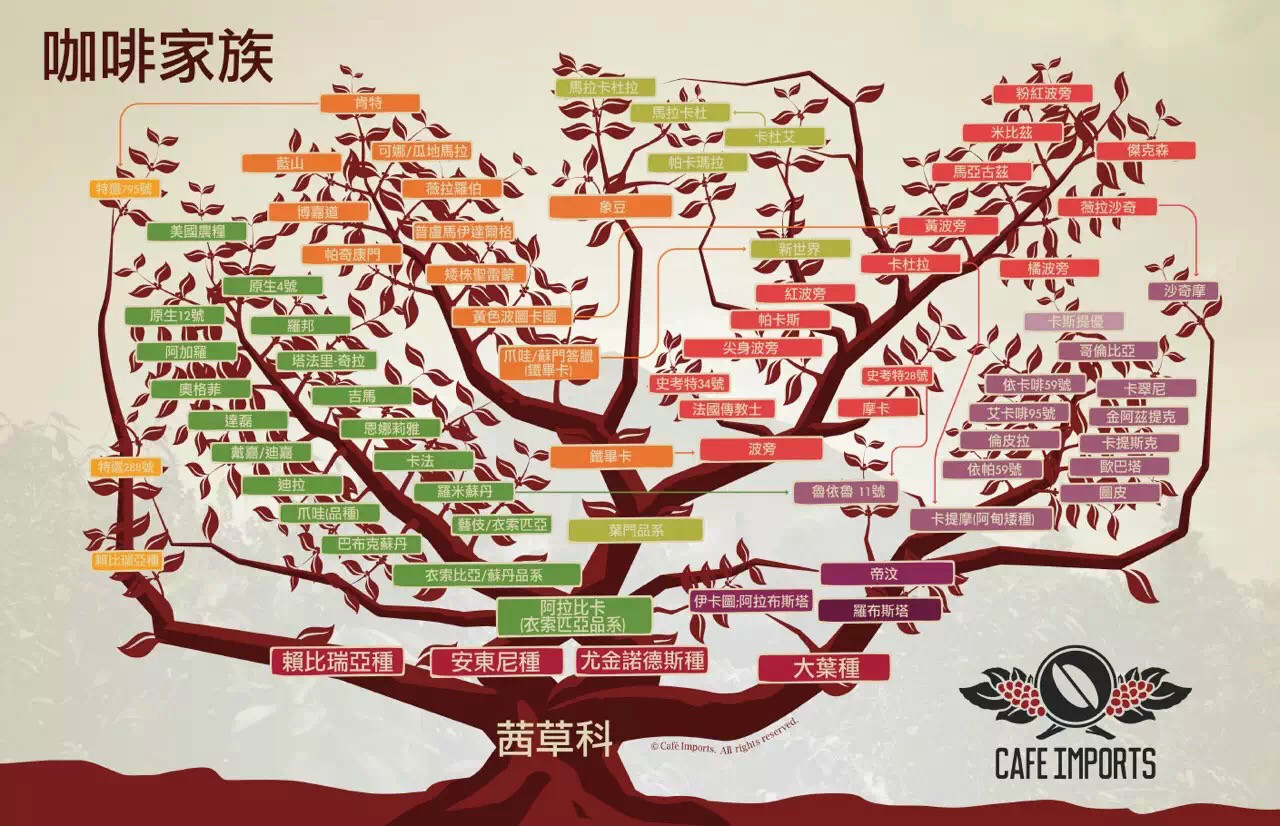
Although Arabica and Robusta both grow in the coffee belt: between 45° north and south latitude, we often say that Arabica is planted at an altitude of more than 800 meters, Arabica has high requirements for planting conditions and weak resistance to pests and diseases. Robusta is planted below 800 meters above sea level, and has strong adaptability and strong resistance to diseases and insect pests. The difference between Arabica and Robusta, in the simplest terms, is the ability to resist pests and diseases, and the ability to adapt to the environment, which makes Arabica coffee beans delicate and Robusta wild.
Coffee varieties
Iron pickup (Typica) originated in Ethiopia and the southeast of Sudan, is one of the oldest varieties of Arabica, the top leaf is red copper color, called red top coffee, also known as the old variety of Arabica coffee. The tinka coffee variety is the easiest coffee variety for others. The main vertical trunk of coffee trees can be up to 5 meters high, which means that the distance between branches and nodes on the same branch is longer than other varieties.
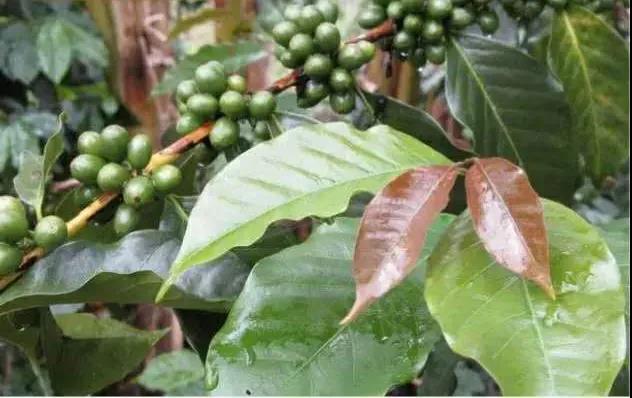
The lateral branches form an angle of 50 to 80° with the vertical trunk. Trunks and branches are not very strong. Coffee leaves have smoother surfaces, less wavy borders, and are elongated. The most important leaf feature is that the bud tips of young leaves are bronze. Typica fruits are typically bright red when ripe, and iron pickups and green beans are usually slender. However, the fly in the ointment is insufficient yield, altitude requirements, susceptibility to leaf rust, and weak resistance to pests and diseases.

Iron pickup varieties of raw beans are larger, pointed oval or thin pointed, also known as "red top coffee." Front Street has its own quiet and clean flavor and balanced characteristics through cup testing of different producing areas. High taste cleanliness is the biggest feature of this variety, and the higher the altitude, the richer the flavor.
|Coffee beans from Ethiopia
As mentioned earlier in Front Street, tin card first appeared in Ethiopia, where soil cultivation processed one high-quality coffee variety after another. Front Street Ethiopia 2020 Cup of Excellence No. 22 Coffee Bean Iron Pickup Planted in the Sidamo Arsi Region. Sidamo coffee flavor is very diverse, creating a coffee produced in each town have obvious differences and characteristics, but coffee flavor is around the juice sense of this obvious flavor characteristics. The coffee beans from another native variety of Alsi region were compared with this iron pickup variety by cup test. In addition to retaining the original juice feeling, the coffee flavor of iron pickup variety was cleaner and the sweet feeling was more obvious.
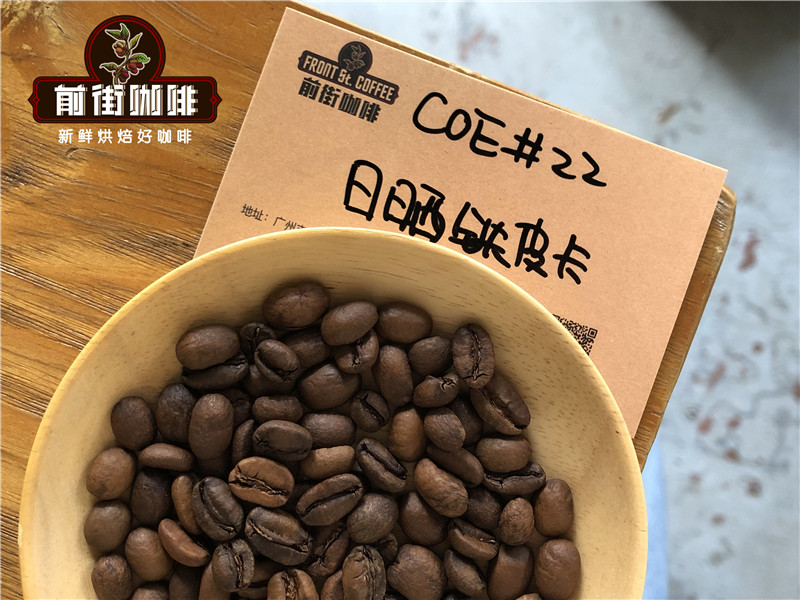
Front Street Coffee-Ethiopia COE #22
Production area: Sidama Arsi, Ethiopia
Grower: Adem Banta Sute
Treatment method: sun treatment
Type: Iron Pickup
Brewing flavor: strawberry, lychee sour, fermented wine aroma, creamy smooth, honey-like finish.
|Jamaica Blue Mountain Coffee Bean
Blue Mountain iron card in the 1820s, transplanted from Martinique Island to Jamaica Blue Mountain, after more than 200 years, Blue Mountain iron card evolved better disease resistance, especially for fruit rot disease resistance is better than the general iron card. However, Blue Mountain Iron Card can not replicate its sweet fragrance when it steps out of Jamaica. Front Street through the cup test Jamaica Blue Mountain tin card coffee beans, its coffee flavor balance temporarily no coffee beans can be completely close to any production area.
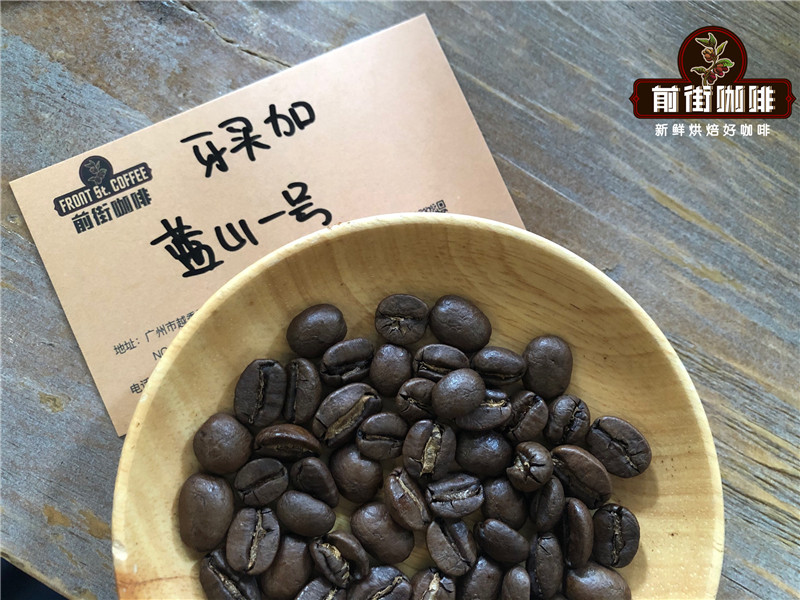
Front Street Coffee--Jamaica Blue Mountain No.1 Coffee
Region: Clifton Manor, Blue Mountain Region
Altitude: 1310m
Type: Iron Pickup
Treatment method: washing
Dark chocolate, nutty flavors on the palate, high cleanliness, very bright, good body, sweet and sour balance
|Papua New Guinea Coffee Bean
Papua New Guinea Tin Card, known as the "Little Blue Mountain," was introduced to Papua New Guinea from Jamaica in 1931. According to Qianjie, Britain had occupied Jamaica for nearly 300 years at that time. The most representative coffee in Jamaica was Blue Mountain Coffee of Iron Pickup. Since Australia had friendly relations with Britain, it was reasonable for Papua New Guinea to introduce Iron Pickup. Therefore, when Front Street Coffee tested Papua New Guinea coffee beans in the cup, it was found that the coffee flavor of this region was relatively balanced, but the body was not enough, slightly thin, and the acid of coffee would be more obvious than Blue Mountain Iron Card.
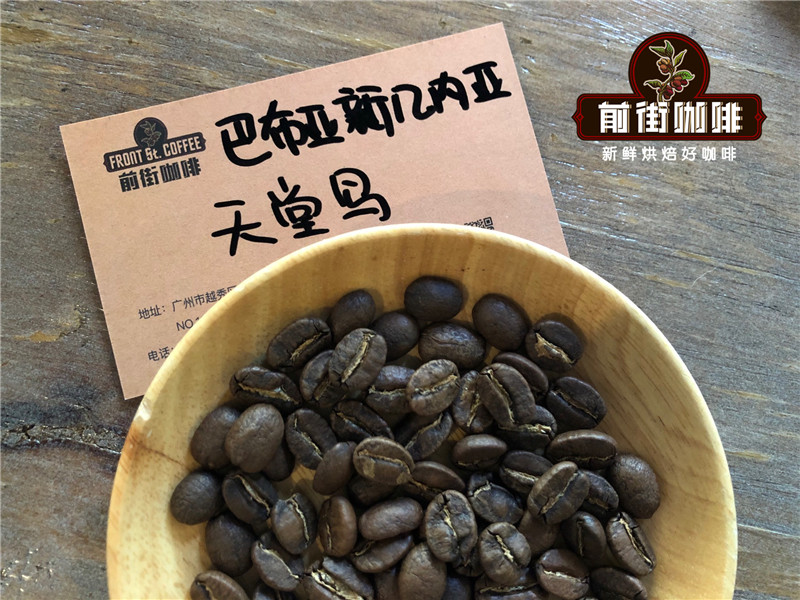
Front Street Coffee--Bird of Paradise in Papua New Guinea
Country of origin: Papua New Guinea
Manor: Bird of Paradise Manor in Sigri
Altitude: 1600-1800m
Treatment method: washing treatment
Type: Iron Pickup
Brewing Flavor: Toasted sweet, nutty sweet, slightly sour and sour with good layering, sweet spice aftertaste, rich and balanced taste, with sweet taste and bright acid, fruity aroma.
|Hawaiian Kona Tin Coffee Bean
Kona's tinka was introduced from Guatemala in 1892. Kona's tinka beans are large and grow at altitudes of 600-1100m. Compared with other coffee-producing countries, Kona's cultivation altitude is low, but on Hawaii Island, Kona is considered high. Attempts have been made to transplant Kona iron pickups to other islands, but because the temperatures on other islands are too high and the altitudes too low for iron pickups to grow properly, they cannot breed the soft sour fragrance unique to Kona. Kona coffee beans, coffee flavor rich aroma, not bitter, not astringent, no burnt taste with soft sour and maltose sweet, rich taste, smooth, mellow.
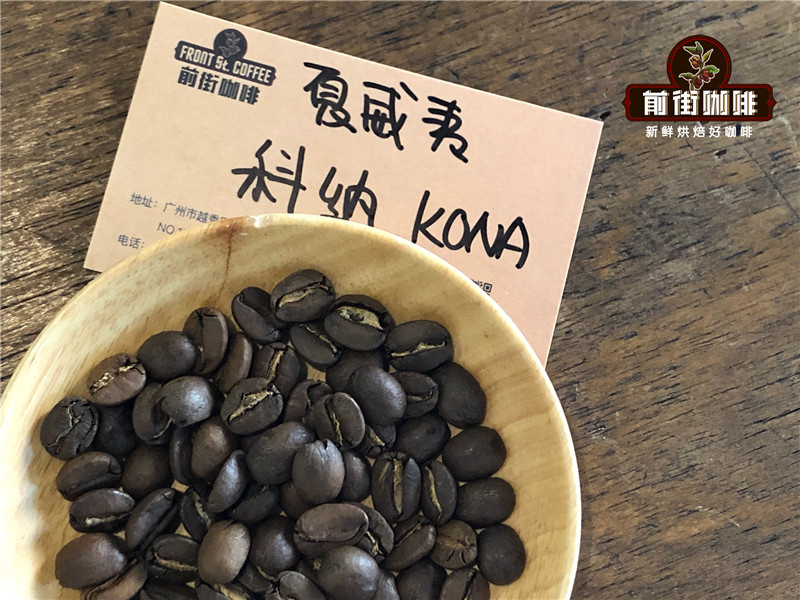
Front Street Coffee-Hawaii Kona Coffee Bean
Region: Kona, Hawaii
Manor: Queen Manor
Altitude: 1100m
Type: Iron Pickup
Treatment method: washing treatment method
Brewing Flavor: Balanced sweet sweet osmanthus honey and elegant full not thick taste, brewing coffee exudes mulberry fruit makes people feel sweet happiness, the aftertaste has a soft malt flavor, cold down like a cup of mulberry tea.
|Yunnan iron card coffee beans
In 1904, French missionary Father Tian Deneng went to Dali to preach and planted a tiepika coffee tree in Zhugula Village. This coffee tree also became the ancestor of Yunnan coffee. Yunnan Baoshan people said that one of the old coffee varieties is iron card, but because of low yield, high planting cost, slowly replaced by cup card Tim varieties. In order to let everyone's impression of Yunnan coffee beans not only stay in special treatment or unpleasant taste, Qianjie set an example by planting this ancient iron pickup variety at the junction of Baoshan and Myanmar in Yunnan Province. Through the front street cup test Yunnan's iron card coffee beans, has a rich fruity, melon, herbal aroma.
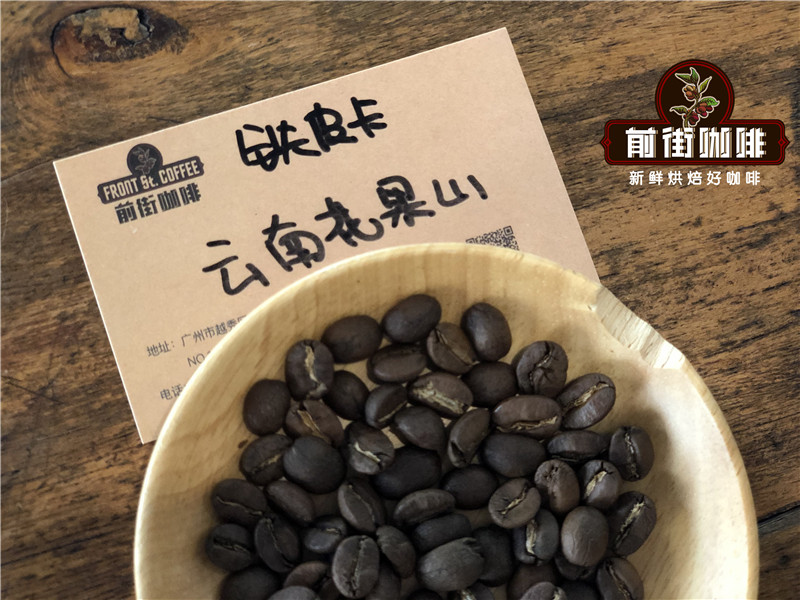
Qianjie Coffee--Yunnan Huaguoshan Coffee Bean
Production area: Baoshan, Yunnan
Altitude: 1450-1550m
Type: Iron Pickup
Treatment method: washing treatment
Brewing Flavor: Soft on the palate, Asian herb aroma, lively and bright sour, cheeks salivation, sour softness, mellow balance, rich layers, aftertaste dark chocolate, honey, sucrose taste obvious, completely cooled, brown sugar flavor.
More fine coffee beans, please add private WeChat Qianjie Coffee, WeChat: kaixinguoguo0925
Important Notice :
前街咖啡 FrontStreet Coffee has moved to new addredd:
FrontStreet Coffee Address: 315,Donghua East Road,GuangZhou
Tel:020 38364473
- Prev

Introduction of espresso the practice and utensils of espresso
1. American almonds, this is a healthier match and tastes good. two。 Take a look at the new entertainment guide and pick up a poster of any program from the cafe. Masurium Qiya Maggialdo is more feminine and looks like a scaled-down version of cappuccino. The biggest difference between them, except that the weight of Maggiadot is 1/3 of that of cappuccino.
- Next

Coffee roasting process roasting degree introduction which roasting machine is better
Tip 1: Get the highest caramelization-caramelization is an important factor affecting coffee flavor, because raw beans will absorb a lot of heat when roasting, then there will be the first cracking sound (1st cracking), at this time, sugar begins to convert into carbon dioxide, water continues to evaporate, coffee aroma will gradually be emitted, and the formation of coffee fat. This pyrolysis reaction can last until the second explosion
Related
- Beginners will see the "Coffee pull flower" guide!
- What is the difference between ice blog purified milk and ordinary milk coffee?
- Why is the Philippines the largest producer of crops in Liberia?
- For coffee extraction, should the fine powder be retained?
- How does extracted espresso fill pressed powder? How much strength does it take to press the powder?
- How to make jasmine cold extract coffee? Is the jasmine + latte good?
- Will this little toy really make the coffee taste better? How does Lily Drip affect coffee extraction?
- Will the action of slapping the filter cup also affect coffee extraction?
- What's the difference between powder-to-water ratio and powder-to-liquid ratio?
- What is the Ethiopian local species? What does it have to do with Heirloom native species?

